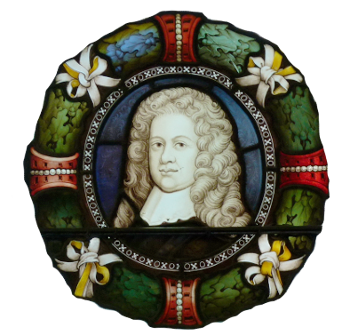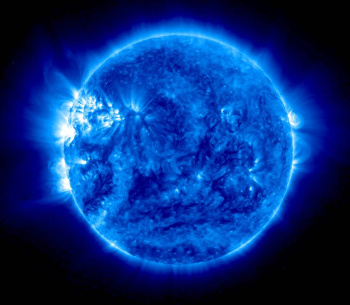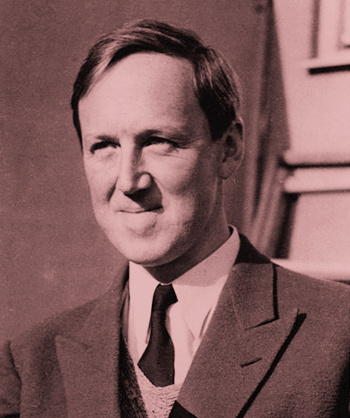Solar Spicules
July 31, 2017
Household chemicals were the first
chemicals that I could access as a
child, and I was joyous when I discovered the
reaction between
vinegar and
baking soda to make
carbon dioxide; viz.,
NaHCO3 + HCH3COO -> CH3COONa + H2O + CO2
in which NaHCO
3 (baking soda,
sodium bicarbonate) reacts with HCH
3COO (vinegar,
acetic acid) to produce
sodium acetate (CH
3COONa),
water (H
2O), and carbon dioxide (CO
2).
There are many more household chemicals available today; and, thankfully, most are designed and packaged for
safety.
Lye (
sodium hydroxide, NaOH) was the traditional treatment for clogged
drains in the past, but my most recent
drain opener purchase came as two safer
liquids that produced an active
product when mixed. The
innovative package for this had two
bottles joined side-by-side with a single
cap.
One popular household product of my childhood was
Spic 'n' Span, a mixture of
sodium carbonate (also called washing soda) and
trisodium phosphate, first sold in 1933 as a cleaning agent.[1] Its unusual name was a combination of
archaic words that meant "sharp, neat" (spick) and "fresh" (span), and the phrase "spicke and span" was used by
Samuel Pepys (1633-1703) in his oft-cited 1665
diary.[2]

Samuel Pepys (1633-1703), as depicted in a stained glass panel, Woolwich Town Hall, Woolwich, South East London.
Pepys' diary contains descriptions of the Great Plague of 1665 and the Great Fire of London in 1666
(Wikimedia Commons image by Kleon3.
"Spic" has a simple
etymology, coming from the
Latin word
spiculum, a sharp point, and spiculum was also the name of the
pike weapon used by
Roman soldiers in the late
3rd century. There are many needle-like
biological structures called
spicules, but this article is about a
solar surface feature called a
spicule.
Galileo discovered the
Galilean moons of Jupiter in 1610, and
sunspots were
discovered in 1611. So, it's surprising that solar spicules, which comprise about a percent of the
Sun's surface and number about a quarter of a million, weren't discovered until 1877. I wrote about the
history of sunspots in an
earlier article (Four Hundred Years of Sunspots, March 22, 2011).
A spicule is a
chromospheric eruption of solar material about 500 km in
diameter, moving outwards at about 20
kilometers/sec. Spicules have a
lifetime of about 15
minutes, they're two
orders of magnitude higher in
density than the
solar wind, and they are typically found in regions of high
magnetic flux. If you do the
math,
multiplying lifetime and
velocity, you see that spicules will extend to a height of a few thousand
kilometers.
Astronomers in the distant past didn't have the ability to see the Sun at the many
wavelengths that are now available for solar observation, many of these wavelengths only accessible outside
Earth's atmosphere, so they can be excused for only discovering spicules two and a half
centuries after the discovery of sunspots.
NASA's STEREO (Solar TErrestrial RElations Observatory) mission was
launched on October 25, 2006, to provide the first detailed
stereoscopic images of the Sun, including
coronal mass ejections.

Solar image at 171 angstrom wavelength, acquired on July 15, 2015, by the NASA STEREO-A Extreme Ultraviolet Imager.
(NASA/STEREO image.
A more recent solar observer is NASA's
Interface Region Imaging Spectrograph (IRIS), a space mission also designed to image the Sun in the
extreme ultraviolet. IRIS was launched on June 28, 2013, and its telescope achieved "
first light" on July 17, 2013. IRIS observed a giant solar eruption on May 30, 2014, and it reached its 10,000th
orbit of the Earth on May 6, 2015.
It's thought that a greater understanding of spicules will aid an understanding of how the solar corona is heated to
temperatures of millions of degrees and the properties of
Alfvénic waves that assist in generating the solar wind.[6-8] In a recent study,
scientists from the
Bay Area Environmental Research Institute (Petaluma, California), the
Lockheed Martin Solar and Astrophysics Laboratory (LMSAL, Palo Alto, California), and the
University of Oslo (Oslo, Norway) have examined data from IRIS and the
Swedish 1-meter Solar Telescope in the
Canary Islands to develop a
model of spicule formation.[6-7]

Solar spicules.
(Still image from a NASA video from NASA's Goddard Space Flight Center.
Earlier attempts at a model of spicule formation just considered the lower
solar atmosphere to be a fully
ionized plasma; that is, a hot
gas of
electrically charged particles.[7] The present model also includes
neutral particles not affected by
magnetic fields as are the charged particles. Adding the neutral particles greatly increased
computation time, and the final model ran for roughly a year on the
Pleiades supercomputer at NASA's
Ames Research Center.[7] The neutral particles added
buoyancy that allows the hot inner plasma to reach the
chromosphere, where it decomposes into spicules that release
energy.[7]
The
radiation-
magnetohydrodynamic model was shown to create numerous spicules with properties that match observations.[6] The simulations closely match the observations from IRIS and the Swedish Solar Telescope.[7-8] The
whip-like spicule formation naturally generates
Alfvén waves, strong
magnetic waves named after
electrical engineer and plasma
physicist,
Hannes Alfvén (1908-1995), that propel the solar wind.[7] Hannes Alfvén was awarded the 1970
Nobel Prize in Physics for his work on magnetohydrodynamics.

Hannes Alfvén (1908-1995) in 1942.
As an electrical engineer, Alfvén had great difficulty publishing his plasma physics papers, even after being awarded the Nobel Prize.
(Wikimedia Commons image, modified for artistic effect.
Says
Juan Martínez-Sykora, lead
author of the study and a solar physicist at Lockheed Martin and the Bay Area Environmental Research Institute,
"With only charged particles in the model, the magnetic fields were stuck, and couldn't rise beyond the sun's surface. When we added neutrals, the magnetic fields could move more freely."[7]

Solar spicule simulation showing the magnetic field lines. (Still image from a NASA video (Bifrost, ITA-UiO/LMSAL).
References:
- Spic and Span Commercial 1950s, YouTube Video by captainbijou.com, January 3, 2011.
- Samuel Pepys, "The Diary of Samuel Pepys," George Bell & Sons (London, 1893), via Project Gutenberg.
- IRIS Mission Overview, NASA Web Site.
- IRIS Web Page at the Lockheed Martin Solar and Astrophysics Laboratory Web Site.
- Sun Today page at the Lockheed Martin Solar and Astrophysics Laboratory Web Site.
- J. Martínez-Sykora, . De Pontieu, V. H. Hansteen, L. Rouppe van der Voort, M. Carlsson, and T. M. D. Pereira, "On the generation of solar spicules and Alfvénic waves," Science, vol. 356, no. 6344 (June 23, 2017), pp. 1269-1272, DOI: 10.1126/science.aah5412.
- Lina Tran, "Scientists Uncover Origins of the Sun's Swirling Spicules," NASA's Goddard Space Flight Center Press Release, June 22, 2017.
- Finally, understanding how the sun's spicules are made, American Association for the Advancement of Science Press Release, June 22, 2017.
- Scientists Uncover Origins of Dynamic Jets on Sun's Surface, NASA Goddard YouTube Video, June 22, 2017. This video can also be found at the NASA Goddard Space Flight Center, as well as here.
Permanent Link to this article
Linked Keywords: Household chemical; chemical compound; child; chemical reaction; vinegar; baking soda; carbon dioxide; sodium bicarbonate; acetic acid; sodium acetate; water; safety; lye; sodium hydroxide; drain; drain cleaner; drain opener; liquid; product; innovation; innovative; bottle; cap; Spic and Span; Spic 'n' Span; sodium carbonate; trisodium phosphate; archaic; Samuel Pepys (1633-1703); diary; stained glass; Woolwich Town Hall; Woolwich; South East London; The Great Plague of London of 1665; Great Fire of London in 1666; Wikimedia Commons; Kleon3; etymology; Latin; spiculum; pike weapon; Roman Empire; soldier; 3rd century; biology; biological; spicule; Sun; solar; Galileo Galilei; Galilean moons of Jupiter; sunspot; history; chromosphere; chromospheric; diameter; kilometers/sec; lifetime; minute; orders of magnitude; density; solar wind; magnetic flux; mathematics; math; multiplication; multiply; velocity; kilometer; astronomer; wavelength; Earth's atmosphere; century; centuries; NASA; STEREO (Solar TErrestrial RElations Observatory); rocket launch; stereoscopy; stereoscopic; coronal mass ejection; angstrom wavelength; STEREO-A Extreme Ultraviolet Imager; Interface Region Imaging Spectrograph (IRIS); extreme ultraviolet; first light; geocentric orbit; orbit of the Earth; temperature; Alfvénic wave; scientist; Bay Area Environmental Research Institute (Petaluma, California); Lockheed Martin Solar and Astrophysics Laboratory (LMSAL, Palo Alto, California); University of Oslo (Oslo, Norway); Swedish 1-meter Solar Telescope; Canary Islands; computer simulation; model; NASA's Goddard Space Flight Center; solar atmosphere; ionization; ionize; plasma; gas; electric charge; electrically charged; particle; neutral; magnetic field; computation; Pleiades supercomputer; Ames Research Center; buoyancy; chromosphere; energy; electromagnetic radiation; magnetohydrodynamic; whip; Alfvén wave; magnetic; electrical engineering; electrical engineer; physicist; Hannes Alfvén (1908-1995); Nobel Prize in Physics; scientific literature; paper; Nobel Prize; Juan Martínez-Sykora; author; computer simulation; magnetic field.